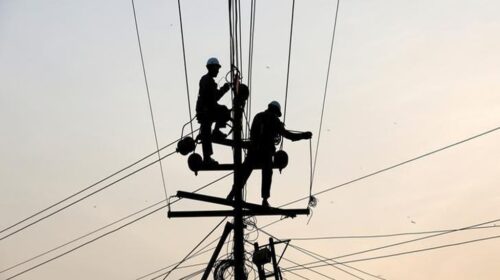If the government is indeed committed to “ensuring sustainability of energy sector” and “providing relief to the common man”, as Power Minister Khurram Dastgir assured a World Bank team the other day, then it must make sure some of the USD 3 billion funding extended by the Bank goes towards removing some deliberately created inefficiencies. There’s long been a tendency in various governments to throw much more money into generation than distribution and transmission, which results in wasted production, needless circular debt and in effect stands the system on its head.
The textbook says that distribution capacity should at least be 20 percent and ideally 40 percent more than generation. Generating energy without the ability to distribute it makes no sense, which is why the inclination to seek funding for generation plants without paying necessary attention to distribution lends weight to charges of corruption and kickbacks that dog previous administrations to this day; PML-N (Pakistan Muslim League-Nawaz) being no exception.
And since Khurram Dastgir likes to stand out as the power minister that leaned on the government to do the right thing by taking painful decisions at a very difficult time, perhaps he’d like to go a step further and earn his stripes by finally addressing this rather glaring problem in the system.
The USD 3 billion is for “infrastructure development and assistance for the Dasu hydropower project”, so it’s not immediately clear which part of infrastructure it is signed to address. But sooner or later the spotlight will inevitably fall on the distribution shortfall, and once it is established that it is because of either unacceptable incompetence or unforgivable corruption, another long process of identifying culprits and awarding punishments will have to begin. This is essential to cleanse the power sector of waste and theft.
The generation-distribution imbalance is not the only problem plaguing this sector, of course, but sorting it out would create the sort of deterrence that can plug a number of unnecessary leakages on its own.
The power sector’s problems make it one of the biggest headaches for all administrations. A report in this newspaper recently revealed that direct and indirect fiscal costs, including circular debt and subsidies, equal around Rs 9.4 trillion for the last 15 years.
Things keep getting worse because no serious investigation into losses and inefficiencies ever sees the light of day for political reasons. And we keep going round in circles. Now, losses in generation have also reached the headlines, especially under- and non-utilisation of efficient power plants.
No government, especially the present one, can say that it did not see this coming. The time when international financial institutions (IFIs) like the World Bank would readily finance mega generation projects that burdened the system and filled some selfish pockets is also coming to an end. And with IMF’s conditions designed to make it more efficient, there is no choice except initiating desperately needed reforms.
Now it’s more a matter of political will than anything else. The government has already paid the price of taking crucial decisions that don’t sit well with the people, so it might not be too eager to burn any more political capital. That way it can also delay any probes that might prove embarrassing later. So, some of the tall claims made by the power minister in his meeting with WB officials will most likely remain hollow for a while to come.
It’s a shame that everybody is aware of the core problems of the power sector, yet nobody is able to get the ball rolling when it comes to solving them. And things remain the same no matter how much they change.







